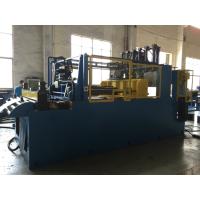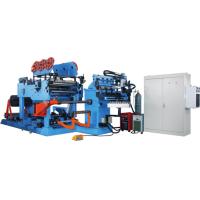Introduction:
Distribution transformers are one of the important equipment in the
power supply and distribution systems of industrial and mining
enterprises and civil buildings. The purpose of transformer vacuum
drying treatment is to remove moisture from the insulation material
of the transformer and improve its electrical performance; On the
other hand, causing the insulation components of the product to
shrink and deform is beneficial for compression deformation,
ensuring the geometric dimensions of the product and improving its
mechanical strength. Because almost all insulation materials are
used on transformers, except for iron cores and wires, various
insulation components inevitably absorb moisture from the air
during storage and production processes. The moisture in insulation
components is the main factor affecting the electrical performance
of insulation. Transformers belong to high-voltage electrical
products. In order to improve the insulation electrical performance
of the products and ensure their normal operation, transformers
must undergo vacuum drying.
Drying principle and process
Pressure swing drying process
The entire process of pressure swing drying is mainly divided into
four stages: preheating stage, transition stage, main stem stage,
and final drying stage.
1, Preheating stage (accounting for about one-third of the entire
process time):
1. First, turn on the vacuum unit, open the main vacuum valve, and
evacuate for 5-10 minutes; (i.e. drawing from 100000 Pa to 80000
Pa)
2. Turn off the vacuum unit and maintain the vacuum for 30 minutes;
3. Open the vacuum main valve again, evacuate for 5-10 minutes
(i.e. from 80000 Pa to 40000 Pa), and close the vacuum unit;
4. Open the inflation valve and inflate for 5-10 minutes; (i.e.
charging from 40000 Pa to 80000 Pa)
5. Close the inflation valve and hold the pressure for 30 minutes;
Turn on the vacuum unit again and start the cycle from the third
step. Until the temperature reaches the temperature set during the
transition phase.
2, Transition phase (approximately 2-3 hours):
If the temperature of the iron core reaches 70 ℃, it enters the
transition stage
1. Turn on the vacuum unit, evacuate for 5 minutes, and turn off
the vacuum unit for 30 minutes;
2. Turn on the vacuum unit, evacuate for 5 minutes, and turn off
the vacuum unit for 30 minutes;
3. Turn on the vacuum unit, evacuate for 5 minutes, and turn off
the vacuum unit for 30 minutes;
4. Turn on the vacuum unit, evacuate for 5 minutes, and turn off
the vacuum unit for 30 minutes;
3, Backbone stage (one-third of the entire process time)
1. Turn on the vacuum unit, evacuate for 15 minutes, and close the
main valve for 15 minutes;
2. Open the main valve again, evacuate for 10 minutes, and repeat
the cycle until the core temperature reaches 80 ℃ and the vacuum
degree reaches 500Pa, then proceed to the final drying stage.
4, If the temperature of the iron core in the main stage reaches 80
℃ and the vacuum degree reaches 500Pa, it can enter the final
drying stage. The vacuum unit should not be shut down. After
continuously vacuuming to 200Pa, evacuate for about 2-3 hours.
Attention: The vacuum degree, core temperature, evacuation time and
closing of the vacuum unit, main valve time, and vacuum degree and
continuous evacuation time during the final drying stage are
approximately determined based on product grade, product moisture
content, and local climate.
Usuage:
The variable voltage vacuum drying equipment is mainly used for the
vacuum drying treatment of various high-voltage insulation products
in the power transmission and transformation industry, such as
transformers (10kV-220kV), high-voltage transformers, high-voltage
bushings, power capacitors, cables, motors, insulation paper, etc.








